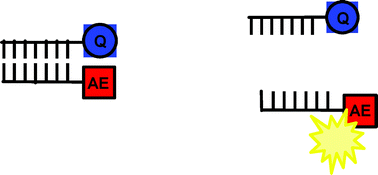Development and application of a novel acridinium ester for use as a chemiluminescent emitter in nucleic acid hybridisation assays using chemiluminescence quenching
Abstract
Chemiluminescent acridinium esters (AEs) permit the development of high sensitivity


 Please wait while we load your content...
Please wait while we load your content...